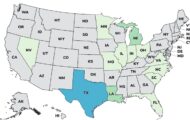The Canadian Salmonella outbreak is linked to red onions imported from the United States, according to the Public Health Agency of Canada. In addition, there are 55 more ill persons in Canada with this infection since the last update on July 24, 2020. The Centers for Disease Control in the United States has not yet said anything about this finding.

Until more is known about this outbreak, people in British Columbia, Alberta, Saskatchewan, Manitoba, and Ontario are advised to not eat any red onions imported to Canada from the United States, including food products that contain red onions. Red onions grown in Canada are not affected by this outbreak.
In Canada, many of the ill persons said they ate red onions before they got sick. Traceback information indicates that the contaminated red onions are being imported to Canada from the United States and were distributed in central and western Canada. The outbreak notice states that more information is needed to determine the cause of contamination.
The outbreak is ongoing, and more illnesses are being reported to the government. More sources could be identified as the investigation continues, and more warnings and even recalls may be issued.
As of Jully 30, 2020, there are 114 people sick with Salmonella Newport infections linked to this outbreak. The number of ill persons by province are: British Columbia (43), Alberta (55), Manitoba (13), Ontario (2), and Prince Edward Island (1). The person who lives in Prince Edward Island reported traveling to Alberta before getting sick. Saskatchewan has not reported any confirmed illnesses in this outbreak, but authorities there are investigating some Salmonella Newport illnesses in the province.
Illness onset dates range from mid June to mid July 2020. Out of 106 people who provided information about their condition to the government, 16 have been hospitalized. The patient age range is from 3 to 100 years of age. Those sickened said they ate red onions at home, in menu items ordered at restarts, and in residential care settings.
Because isolates taken from ill persons in the U.S. and in Canada have a similar genetic fingerprint, these people likely have a common source of infection. However, as of this evening, no entity in the U.S. has confirmed that red onions are a source of the outbreak in that country.
In Canada, people are asked to check their homes for red onions, including whole, sliced, and chopped versions, as well as prepared foods that contain red onions, including premade salads sandwiches, dips, or wraps.
If you do have red onions at home, look for a sticker or printing that indicates it was imported from the United States. If the onions were imported from the U.S., don’t eat them. If the onions aren’t labeled, don’t eat them. Throw them away and wash your hands thoroughly with soap and water. Then wash and sanitize the places you stored the onions.
If you order any salad or other food that contains red onions at a restaurant, ask if they came from the United States. If they did, or if the staff doesn’t know the source, don’t eat them.
Symptoms of a Salmonella infection include a fever, nausea, vomiting, stomach and abdominal pain and cramps, muscle aches, and diarrhea that may be bloody. Symptoms usually start 6 to 72 hours after infection. Most people do get better on their own after a week, but some do become ill enough to be hospitalized. If you or anyone you know has eaten red onions from the U.S. and has been ill, see your doctor. You may be part of this Salmonella Newport outbreak linked to red onions imported from the U.S.




